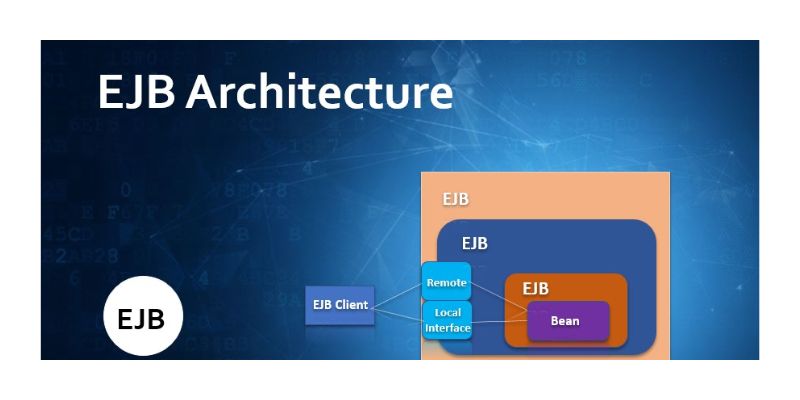Enterprise JavaBeans (EJB) is a robust component architecture for building scalable, distributed, and transactional Java applications. One of EJB’s key features is its support for various component types, each serving different purposes in enterprise application development. If you want to learn more about EJB and its various component types, you can attend Java Training in Bangalore. In this blog post, we will explore the different component types of EJB in Java and understand their roles and characteristics.
Component Types Of EJB
- Session Beans:
Session beans are the most commonly used EJB component type. They represent business logic or processes within an application. There are three types of session beans:
- Stateless Session Beans: Stateless session beans do not maintain a conversational state between client invocations. They are lightweight and can be pooled to serve multiple clients efficiently.
- Stateful Session Beans: Stateful session beans maintain a conversational state for a specific client across multiple method invocations. They suit scenarios where the client requires a long-lived conversation with the server.
- Singleton Session Beans: Singleton session beans have a single instance per application and are shared by all clients. They are often used to manage application-wide resources or maintain shared states.
- Entity Beans (Deprecated):
Entity beans were used in older versions of EJB to represent persistent data entities. However, with the introduction of Java Persistence API (JPA), entity beans have been deprecated in favour of JPA entities for ORM (Object-Relational Mapping) functionality. Java Training in Marathahalli covers many topics, including core Java, J2EE, Spring Framework, Hibernate, and more.
- Message-Driven Beans (MDB):
Message-driven beans are asynchronous components for processing messages from JMS (Java Message Service) providers. They can consume messages from queues or topics and execute business logic in response to message arrival. MDBs are widely used in implementing decoupled and scalable messaging systems.
Now, let’s dive deeper into each component type and understand their characteristics and usage scenarios:
- Session Beans:
Stateless Session Beans are ideal for implementing stateless services such as business logic, data processing, or service orchestration. Since they don’t maintain a state, they are highly scalable and suitable for handling multiple client requests concurrently.
– Stateful Session Beans: Useful for scenarios where the client needs to maintain a conversational state across multiple interactions with the server. For example, shopping cart management in an e-commerce application.
Singleton Session Beans are used for managing application-wide resources or shared states such as configuration settings, caches, or pooled connections to external resources.
- Entity Beans (Deprecated):
– Entity beans were designed to represent persistent data entities and provide CRUD (Create, Read, Update, Delete) operations. However, their usage has declined with the adoption of JPA, which offers a more flexible and efficient ORM solution.
- Message-Driven Beans (MDB):
– MDBs are essential for building event-driven and asynchronous architectures. They enable seamless integration with JMS providers, allowing applications to process messages reliably and efficiently.
– Common use cases for MDBs include processing incoming orders, handling notifications, processing background tasks, and implementing pub/sub messaging patterns.
Understanding the component types of EJB in Java is crucial for designing scalable, maintainable, and efficient enterprise applications. Session beans cater to business logic implementation, while message-driven beans facilitate asynchronous communication and event processing. Although entity beans are deprecated, the Java Persistence API (JPA) provides a robust solution for managing persistent entities. By leveraging these EJB components effectively, developers can build robust, distributed applications that meet the demands of modern enterprise environments. Enrolling in Programming Languages Classes in Bangalore will help them build robust applications and pursue a successful IT career.
Also Check: Java Interview Questions and Answers


